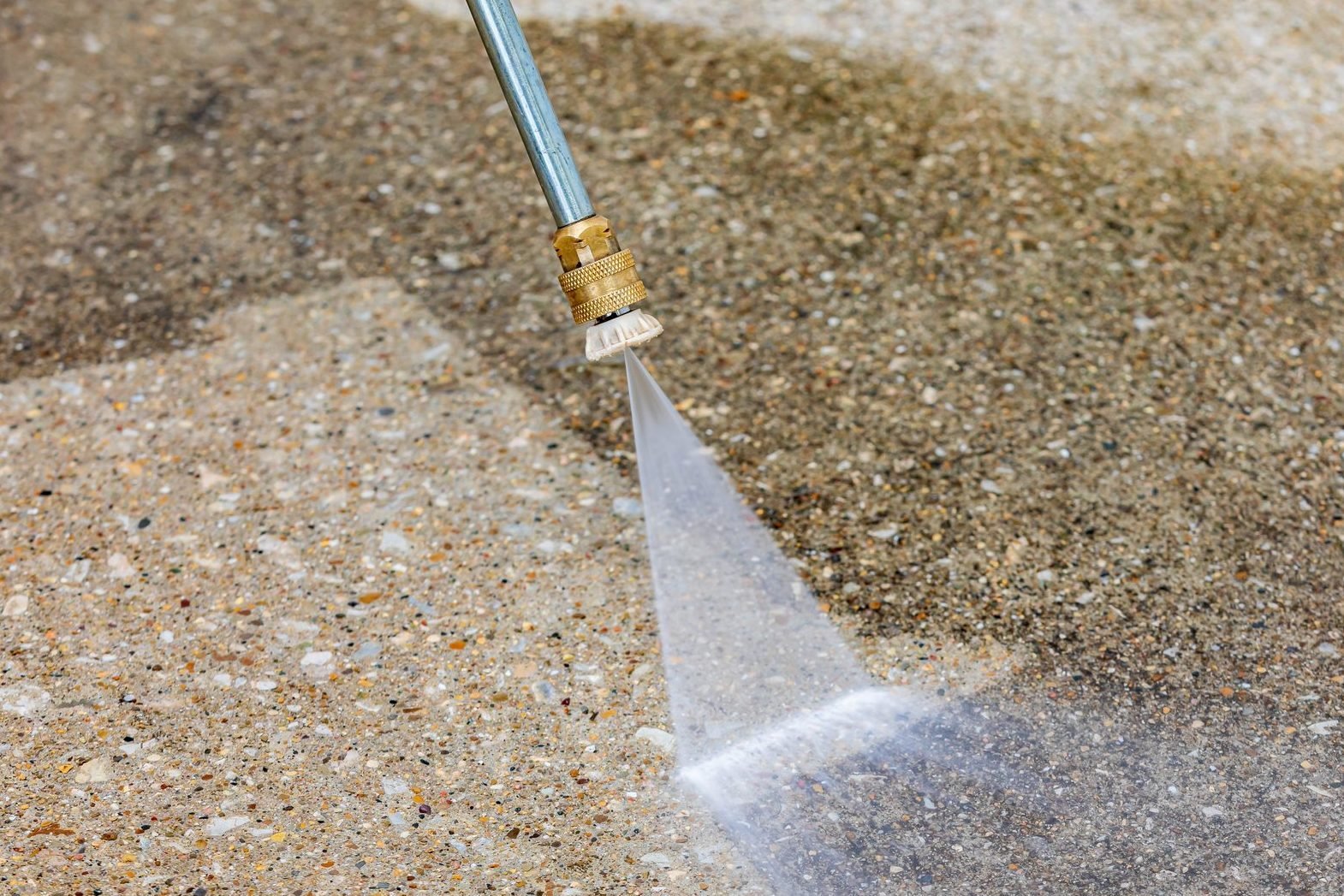To get the most out of your pressure washer this summer, learn about the different kinds of nozzles so you always use the right one!

How To Choose and Replace Pressure Washer Nozzles

Pressure washers are extremely useful cleaning tools, as anyone who’s tried to wash a muddy deck, car or patio by hand can tell you.
Whether gas or battery-powered, pressure washers spray water powerfully in various concentrations from a hand-operated wand. Most come with sets of nozzles, allowing them to deliver everything from a narrow, wood-splintering jet of water to a wide, gentle shower.
Want to learn more about pressure washer nozzles and how to choose and replace one? Keep reading.
Types of Pressure Washer Nozzles
Before buying a new pressure washer nozzle (or a set), it’s important to understand they aren’t necessarily universal. Even nozzles of the same color and angle come in multiple sizes. Pressure washers feature different flow rates and pressure specifications, which determine which size nozzle works best for a particular unit.
All nozzles have the size stamped on the side. Before purchasing, be sure to cross-reference this number with the recommended nozzle hole sizes in your user’s manual. If you’ve misplaced your manual, use the pressure washer specs and this chart to determine which size nozzle you need.
Here are the seven types of pressure washer nozzles:
0-degree nozzle
Usually red with a small circular hole in the center, 0-degree nozzles give the thinnest, highest pressure stream of water of any pressure washer nozzle. Choose this nozzle for cleaning small sections of encrusted dirt from hard surfaces, like concrete. They’re are also great for cleaning narrow, hard-to-reach areas, like the cracks between patio or driveway slabs.
15-degree nozzle
These yellow nozzles shoot a narrow spray pattern that’s great for washing hard surfaces, like concrete or asphalt. The pattern is wider than a 0-degree nozzle, allowing more surface area to be covered in less time. Be careful, though: The powerful stream can easily damage wood and paint.
25-degree nozzle
These green nozzles spray in a triangle. Though featuring a larger central hole and lower pressure than red and yellow nozzles, these still pack quite a punch and can mar wood if you’re not careful. They’re best for cleaning tough surfaces with lots of area, like stone or brick walls.
40-degree nozzle
These cover plenty of surface area but don’t apply a lot of pressure compared to narrower angled nozzles. They’re great for washing softer surfaces like wooden and composite decks, house siding or even your vehicle. Just be sure not to spray one spot for too long, because even this less powerful spray can damage wood and paint.
65-degree soap nozzle
Thanks to a large central hole, black soap nozzles offer the widest and lowest pressure spray pattern of all standard nozzles. The low pressure and high flow rate make these perfect for washing and rinsing delicate surfaces like windows and other glass, ceramics and vehicles.
These nozzles are the only ones that work properly with the built-in soap dispensers.
Rotary nozzle
A relatively new arrival to the pressure washer scene, rotary nozzles combine the extremely high pressure and knockout cleaning power of a 0-degree nozzle with the coverage of a 25-degree nozzle. They do this by emitting a thin, 0-degree jet from the end of a black, cylindrical attachment that rapidly rotates during use.
This fast, constant rotation causes the stream to cover many times more surface area than a regular 0-degree nozzle could in the same amount of time. I’ve used a rotary nozzle to save time blasting large areas of caked-on dirt from a concrete patio. The dirt was too stubborn for a lower-pressure nozzle, and there was lots of it, so the rotary spray pattern saved tons of time.
Revolving multi-nozzle
Want to save yourself the time and trouble of constantly switching pressure washer nozzles for different jobs? Many pressure washer owners are going with a single revolving nozzle with every different spray concentration built in. Simply rotate the nozzle to the numbered marking of the spray pattern you want and start cleaning.
How To Change the Nozzle on a Pressure Washer
Luckily, pressure washer nozzles are easy to change. Wands come with quick-release fittings to receive the stainless steel or brass back end of any nozzle of the correct size. The most common diameter for pressure washers and nozzles is one-quarter inch.
Here’s how to change a nozzle:
- Shut down your pressure washer if you won’t be spraying anything within the next minute or two. Running too long without spraying can damage your machine.
- Retract the quick-release fitting on the end of the wand.
- Pull out the nozzle and place it somewhere safe. Many models come with a built-in nozzle holder.
- Retract the quick-release fitting again, then slide the nozzle into the fitting. Release the fitting; it should interlock with the nozzle.
- Tug on the nozzle to make sure it doesn’t pull free.
Pro tip: If the quick-release fitting won’t retract, spray inside the cracks with WD-40 and let it sit for a while. Then, try again. If it still won’t budge, try pushing on the edge of the outer ring of the fitting with the flat side of a small slot screwdriver. This nearly always works for me. While you’re at it, learn how to service a pressure washer muffler.




















